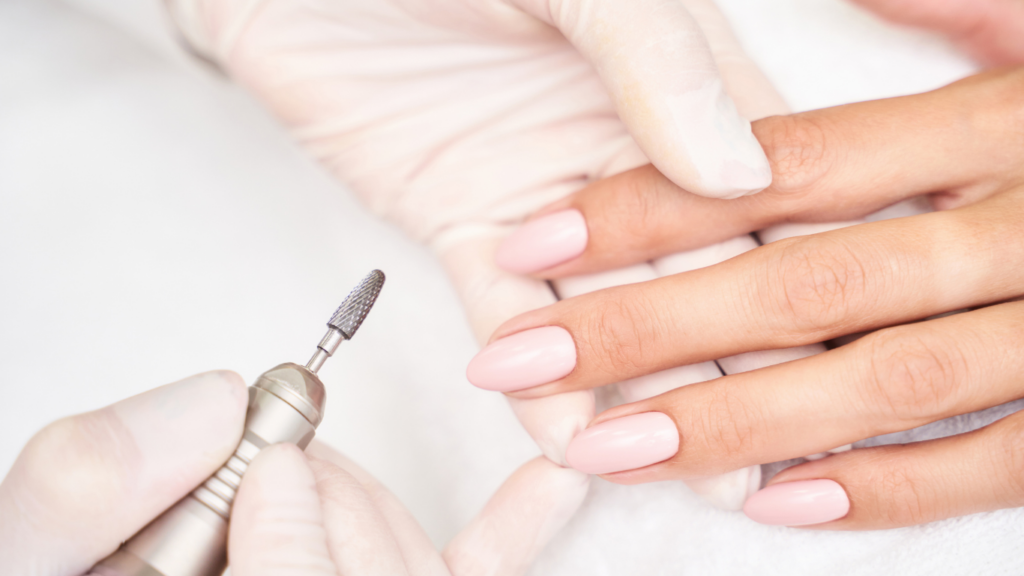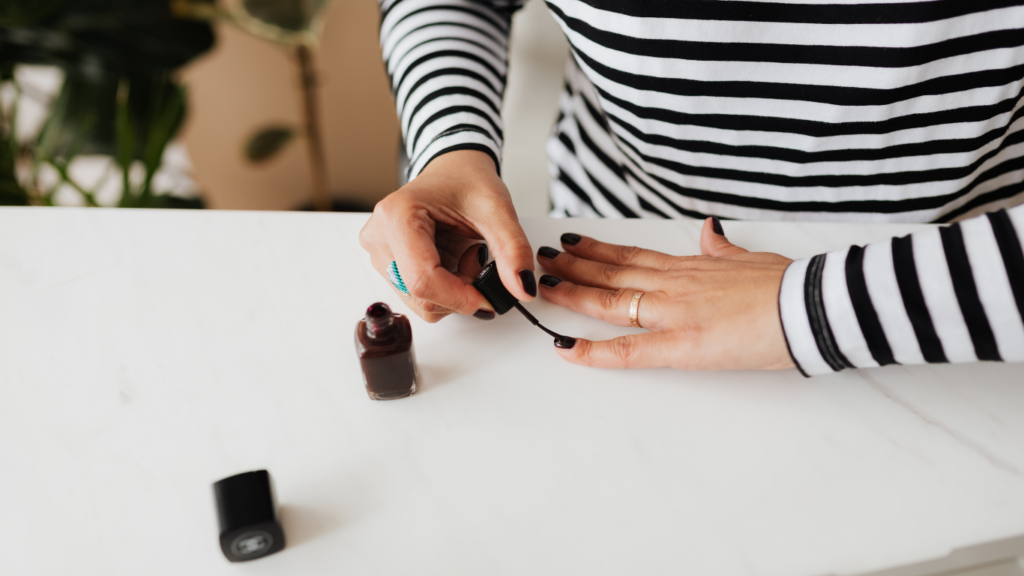Understanding Nail Health
Nail health reflects overall wellness and requires proper care. Healthy nails display a smooth, consistent texture without pits or grooves. Their color should be uniform and free from discolorations.
Common Nail Problems
- Brittleness: Caused by overexposure to water or harsh chemicals.
- Discoloration: Often a result of infections or smoking.
- Ridges: Vertical ridges could signify aging, while horizontal ridges might indicate stress or illness.
Factors Affecting Nail Health
- Diet: Deficiency in vitamins, particularly B vitamins and iron, weakens nails.
- Hydration: Inadequate hydration makes nails dry and brittle.
- Environment: Frequent exposure to water, detergents, and temperature extremes impacts nail strength and appearance.
Essential Nutrients for Nail Health
- Biotin: Found in eggs, nuts, and seeds; strengthens nails.
- Iron: Present in spinach, lentils, and red meat; prevents brittleness.
- Zinc: Available in beans, nuts, and dairy; promotes growth and repair.
- Use a moisturizer regularly to keep nails hydrated.
- Wear gloves when using cleaning products or immersing hands in water for prolonged periods.
- Trim nails regularly to avoid snags and breaks.
Understanding nail health helps pinpoint specific actions to enhance nail strength and appearance, building a foundation for effective nail care routines.
Daily Nail Care Tips
Daily nail care is essential for maintaining strong, healthy nails. Following simple steps can make a significant difference in the appearance and strength of your nails.
Proper Nail Hygiene
Maintaining proper nail hygiene is crucial for nail health. I keep my nails clean and dry to prevent bacterial and fungal infections. Gentle cleaning under the nails, especially after washing hands, helps remove dirt and reduce infection risk. I avoid using sharp objects since they can harm the nail bed.
Regularly trimming nails prevents them from growing too long and breaking. I use nail clippers or manicure scissors, cutting straight across and rounding the tips gently to maintain strength. Avoid biting nails or picking at cuticles, as these habits can damage the nail structure and surrounding skin.
Hydration and Moisturization
Hydration is key for strong, flexible nails. I apply moisturizing lotion or cuticle oil daily to my nails and cuticles to maintain hydration. Ingredients like vitamin E, jojoba oil, and shea butter are particularly effective. I always massage the oil gently into the base of the nails and the surrounding skin for better absorption.
I protect my hands and nails from harsh chemicals by wearing gloves while cleaning or using detergents. These substances can dry out and weaken nails. Drinking enough water throughout the day also supports nail hydration from within.
Nail-Friendly Diet
A nail-friendly diet significantly impacts nail health. I include foods rich in essential nutrients like biotin, iron, and zinc in my diet. For example, eggs, nuts, and legumes provide biotin, while red meat, spinach, and lentils supply iron. Zinc is found in shellfish, pumpkin seeds, and whole grains.
In addition to these nutrients, I ensure to consume vitamins A, C, and E, which support overall nail strength and growth. Leafy greens, citrus fruits, and almonds are excellent sources. Maintaining a balanced diet helps to keep my nails strong and reduces the occurrence of brittleness and splitting.
By following these daily nail care tips, I can ensure my nails remain healthy without frequent salon visits, combining simplicity with effectiveness for the best results.
Effective DIY Nail Treatments

Utilizing DIY treatments can transform your nails from weak and brittle to strong and healthy. Below, I’ve detailed a few effective homemade remedies for nail care.
Olive Oil Soak
Soaking nails in olive oil provides deep nourishment. Olive oil’s moisturizing properties penetrate the nail bed, enhancing flexibility and preventing breakage. Warm about 1/4 cup of olive oil and soak your nails for 10-15 minutes. Repeat this process bi-weekly for noticeable improvement.
Lemon Juice and Baking Soda Scrub
Combining lemon juice and baking soda creates an effective scrub to remove stains and discolorations. Lemon’s natural bleaching properties paired with baking soda’s gentle abrasiveness work synergistically. Mix 1 tablespoon of lemon juice with 2 tablespoons of baking soda to form a paste. Scrub your nails gently for 5 minutes, and rinse thoroughly. Use this once a week to maintain clean, bright nails.
DIY Cuticle Oil
Cuticle oil can significantly enhance nail health by moisturizing and strengthening cuticles. To make a DIY cuticle oil, blend essential oils such as jojoba oil and vitamin E oil. Mix equal parts of the oils in a clean bottle with a dropper. Apply the mixture daily before bedtime, massaging gently into the cuticles to boost nail growth and prevent dryness.
Nail Protection Strategies
With the right protection strategies, achieving stronger, healthier nails at home becomes easier. I’ll discuss key practices and products to shield your nails from damage.
Nail-Friendly Practices
Adopt practices that minimize nail stress. Use your nails mainly for aesthetic purposes rather than tools. Open packages or peel labels with fingers instead of nails to prevent chipping and splitting.
Wear Gloves: Wear gloves during tasks involving water or chemicals, like washing dishes. Gloves protect nails and cuticles from the drying effects of detergents and prolonged water exposure, keeping them hydrated and strong.
Limit Water Exposure: Excess moisture weakens nails over time. Keep hands dry when possible, and after washing them, use a towel to dry between your fingers and around your nails thoroughly.
Use Gentle Products: Choose acetone-free nail polish removers to prevent excessive drying. Avoid harsh soaps and opt for mild, moisturizing ones to keep nails and skin healthy.
Protective Coatings
Apply protective coatings to enhance nail strength. These coatings act as barriers to environmental stressors.
- Base Coat: Use base coats before applying nail polish. A high-quality base coat prevents staining and forms a protective layer to reduce breakage.
- Top Coat: Apply a durable top coat after nail polish. It adds a shiny finish and a protective barrier that minimizes chipping. Reapply the top coat every few days to maintain the protection.
- Nail Hardeners: Opt for nail hardeners containing calcium or keratin. These fortifying products penetrate the nail layers, delivering essential nutrients that bolster nail resilience.
Remember, consistent application of these strategies contributes significantly to maintaining robust, healthy nails without frequent salon visits.
Common Nail Problems and Solutions
Maintaining strong, healthy nails can be challenging without knowing how to address common problems. In this section, I’ll go over some typical nail issues and offer practical solutions to help you achieve better nail health.
Brittle Nails
Brittle nails, which easily crack or split, can result from various factors. Frequent exposure to water, harsh chemicals, or extreme temperatures weakens nails over time. Nutritional deficiencies, particularly a lack of biotin and iron, also contribute to nail brittleness.
To strengthen brittle nails:
- Moisturize Regularly: Use hand creams and cuticle oils daily to keep nails hydrated. Ingredients like shea butter and vitamin E are beneficial.
- Wear Gloves: Protect nails from water and harsh chemicals by wearing rubber gloves during household chores.
- Supplement Wisely: Add biotin- and iron-rich foods to your diet. Eggs, nuts, and leafy greens are good options.
- Limit Chemical Exposure: Avoid acetone-based nail polish removers and opt for gentler alternatives.
Yellowing Nails
Yellowing nails often indicate underlying issues such as fungal infections or frequent use of dark nail polishes without a base coat. Smoking and certain health conditions, like diabetes or psoriasis, also lead to nail discoloration.
- Use a Base Coat: Always apply a base coat before using dark nail polishes to prevent staining.
- Try Natural Remedies: Lemon juice, which acts as a natural bleaching agent, can be used to reduce yellow tint. Soak nails in lemon juice for 10-15 minutes.
- Maintain Nail Hygiene: Keep nails clean and dry to prevent fungal infections. Regularly sanitize nail care tools.
- Seek Medical Advice: If the discoloration persists, consult a healthcare professional to rule out underlying health conditions.



